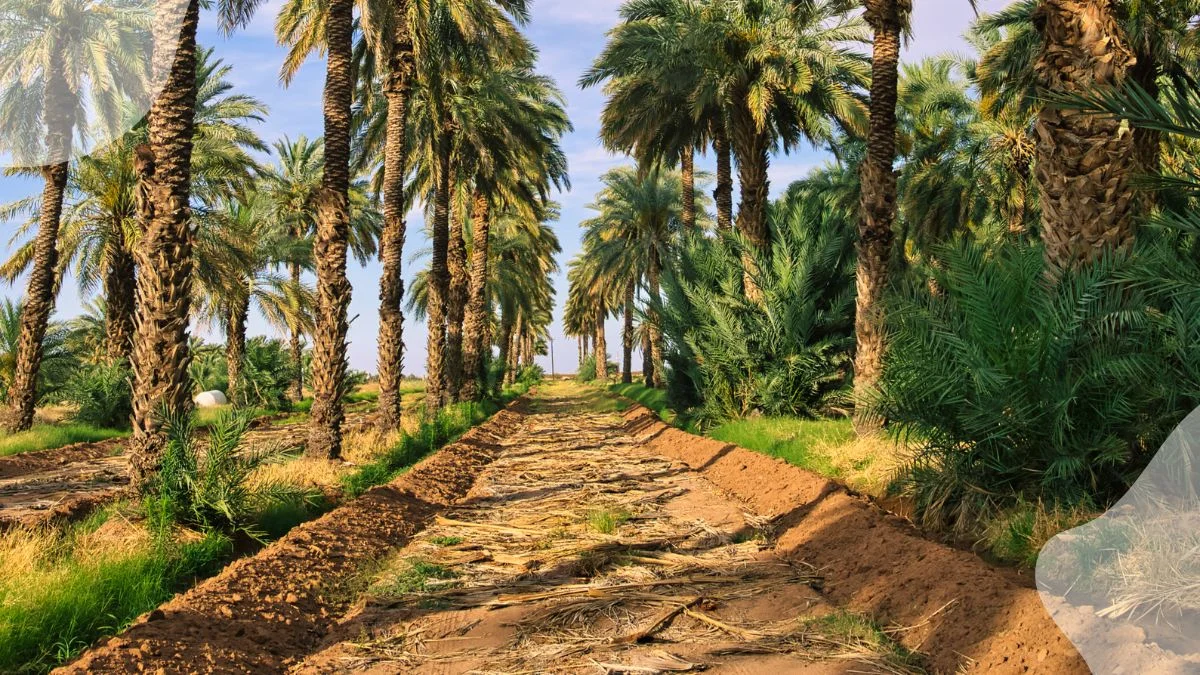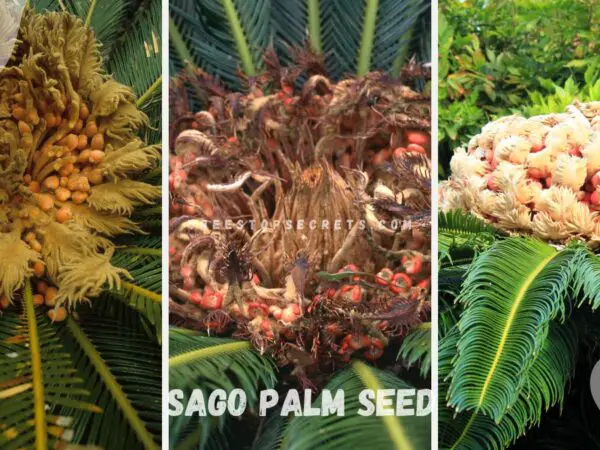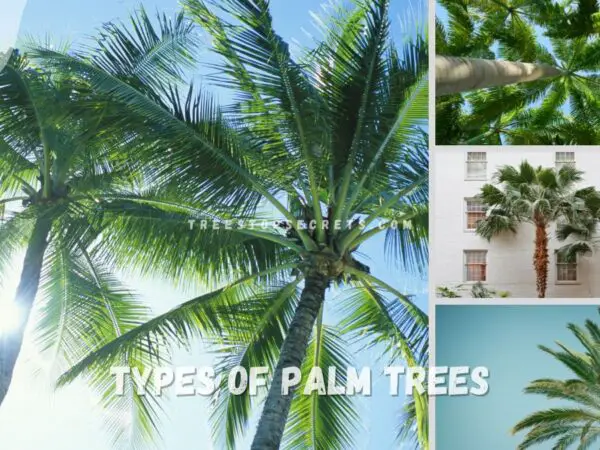Curious about the diverse array of palm trees that thrive in Arizona's arid climate? From the iconic Mexican Fan Palm to the striking California Fan Palm, Arizona boasts a surprising variety of palm tree species. While some types, like the Mediterranean Fan Palm, are hardy and drought-resistant, others, such as the Date Palm, require more water to flourish. Discover how these different palm trees add unique charm and greenery to the desert landscape of Arizona.
Key Takeaways
- Explore Different Types: Learn about the variety of palm trees in Arizona, including Top Date Palms, Fan Palms, and Unique Varieties.
- Consider Planting Locations: Understand the suitable planting locations for different palm tree species in Arizona to ensure their growth and health.
- Follow Care Tips: Implement proper care tips for palm trees, such as watering schedules, fertilization, and protection from extreme weather conditions.
- Consultation Advice: Seek expert advice or consultation when selecting, planting, and maintaining palm trees to maximize their beauty and longevity.
- Enhance Your Landscape: Use the information provided to enhance your landscape with tropical palms that thrive in the Arizona climate.
- Preserve Arizona's Beauty: By choosing and caring for the right palm tree species, contribute to preserving the natural beauty of Arizona's environment.
Palm Trees in Arizona
Climate Compatibility
Palm trees in Arizona thrive in hot and arid climates, requiring ample sunlight for optimal growth. They are well-suited to the high temperatures and low humidity levels typical of the region. Different types of palm trees have varying temperature tolerances, with some being more heat-resistant than others. These trees have adapted to the arid climate by developing deep root systems that help them absorb water efficiently from the soil.
Landscape Integration
Various types of palm trees, such as Phoenix palms and Desert palms, add a touch of tropical flair to Arizona landscapes. They are commonly used to create resort-style settings or enhance the overall aesthetic appeal of gardens and yards, with perfect palm tree options and tough palm varieties. Palm trees play a crucial role in transforming ordinary landscapes into lush, vibrant spaces reminiscent of exotic destinations. When integrating palm trees into landscape designs, consider factors like spacing, height, and overall theme to achieve a harmonious look.
Native vs Invasive Species
Native palm tree species in Arizona are those that naturally occur in the region and have evolved to thrive in its specific conditions. In contrast, invasive species are non-native plants that can outcompete native vegetation and disrupt the local ecosystem. Choosing non-invasive palm tree varieties is essential to preserve the natural balance of Arizona's flora and fauna. Invasive species can pose a significant threat to native plant populations by altering habitats and reducing biodiversity.
Top Date Palms
Resort-Style
Resort-style palm trees bring a touch of luxury to outdoor areas, enhancing their visual charm. These palms boast tall, slender trunks and graceful fronds that sway gently in the breeze. Their elegant appearance makes them perfect for upscale settings. The resort-style date palms are often chosen for their ability to create a sophisticated and tropical ambiance.
Phoenix Dactylifera
Phoenix dactylifera, commonly known as date palms, are prized for their unique features. These palms have a sturdy trunk topped with a crown of feathery fronds that add a regal touch to landscapes. In Arizona, Phoenix dactylifera plays a significant role in landscaping due to its desert-adapted nature and iconic appearance. Proper maintenance, including regular watering and pruning, is essential to ensure the health and vitality of Phoenix dactylifera palm trees.
Pineapple Palms
Pineapple Palms stand out in Arizona landscapes with their striking resemblance to a pineapple. These palm trees feature a single, stout trunk with a dense cluster of fronds at the top, creating a unique and eye-catching look. Their slow growth rate and low maintenance requirements make them a popular choice for homeowners. Pineapple Palms not only add a tropical flair to outdoor spaces but also contribute to the overall aesthetic appeal with their sculptural form.
Fan Palms Overview
Mediterranean Fan
The Mediterranean Fan Palm is a popular choice for Arizona due to its adaptability to desert climates. With its graceful fronds and compact size, it adds an elegant touch to front yards. These palms thrive in sunny locations with well-drained soil. To care for them, ensure regular watering and occasional fertilization.
- Suitable for Arizona climates
- Visual impact in front yards and poolside areas
- Caring and maintenance tips
Mexican Hybrid
Mexican Hybrid Fan Palms stand out for their unique blend of features, combining the hardiness of Mexican palms with hybrid vigor. These palms offer quick growth and require minimal maintenance, making them ideal for home landscapes. Their slender trunks and lush green fronds create a tropical oasis feel.
- Unique characteristics and advantages
- Low maintenance requirements
- Growth patterns and maintenance insights
Windmill Palms
Windmill Palms, known for their tropical appearance, bring a touch of paradise to Arizona landscapes. Their compact size makes them versatile for both small and large spaces. These palms can thrive in various light conditions, from full sun to partial shade, offering flexibility in placement.
- Tropical appearance and resilience
- Versatility in different light conditions
- Planting and caring tips in Arizona
Tropical Palms Guide
Piru Queen
Piru Queen Palms add tropical allure to Arizona landscapes with their graceful fronds and slender trunks. These palms are visually appealing, creating a lush and exotic atmosphere in gardens. Maintenance of Piru Queen Palms involves regular watering and occasional pruning to ensure their health and aesthetics. They thrive in well-drained soil, making them suitable for various landscaping styles.
- Pros:
- Enhances the aesthetic appeal of landscapes
- Well-suited for different soil types
- Cons:
- Requires regular maintenance such as pruning
King Piru Hybrid
King Piru Hybrid Palms are known for their unique blend of characteristics, combining the best traits of different palm varieties. These palms boast both robustness and beauty, standing out in any garden setting. Ideal growing conditions for King Piru Hybrid Palms include ample sunlight, well-draining soil, and occasional fertilization to promote healthy growth.
- Characteristics of King Piru Hybrid Palms:
- Robustness and beauty
- Unique blend of traits from different palm varieties
- Growing conditions:
- Requires ample sunlight
- Thrives in well-draining soil
Pindo Palms
Pindo Palms are admired for their striking appearance, featuring blue-green fronds and a compact silhouette. Despite their slow growth rate, these palms are prized for producing edible fruit known as pindo dates. The fruit can be used to make jams or eaten fresh. Pindo Palms exhibit remarkable adaptability to various temperatures and soil types, making them versatile landscaping choices.
- Slow growth rate with striking appearance
- Produces edible fruit called pindo dates
Unique Varieties
Sago Palms
Sago Palms, not true palms but cycads, are slow-growing plants with feathery and arched fronds. These drought-tolerant plants feature a stout trunk topped with a cluster of leaves. Their growth rate is relatively sluggish, making them ideal for low-maintenance landscapes.
These plants thrive in well-draining soil and bright, indirect light. They are sensitive to overwatering, so it's crucial to allow the soil to dry out between watering sessions. Sago Palms are versatile and can be used as striking focal points in gardens or as potted plants on patios.
- Distinctive appearance: Feathery fronds and stout trunks.
- Slow growth rate: Ideal for low-maintenance landscaping.
- Versatile uses: Suitable for outdoor landscaping or as potted plants.
Mexican Blue Palm
Mexican Blue Palms, also known as Brahea Armata, are striking trees with silver-blue leaves. These palms are drought-tolerant once established and can withstand high temperatures. Their architectural shape makes them popular choices for desert landscapes.
To care for Mexican Blue Palms, ensure they are planted in well-draining soil and receive ample sunlight. Regular watering during the growing season is essential to promote healthy growth. These palms add a touch of elegance to gardens and create a focal point with their unique coloration.
- Silver-blue leaves: Distinctive coloration adds visual interest.
- Drought-tolerant: Well-suited for arid climates like Arizona.
- Architectural shape: Ideal for creating focal points in landscapes.
Planting Locations
Ideal Spots
When considering planting palm trees in Arizona, it is essential to identify locations that offer optimal growing conditions. The best spots for planting palm trees in the state are areas with well-draining soil, ample sunlight, and protection from strong winds. These ideal spots provide the necessary environment for palm trees to thrive and flourish.
Factors such as temperature tolerance and water requirements should be taken into account when selecting spots for different plants. For instance, cold-hardy palm tree varieties like the Mexican Blue Palm are suitable for planting in northern Arizona, where temperatures can drop significantly during winter. On the other hand, heat-loving species such as the California Fan Palm thrive in the hotter regions of southern Arizona.
To maximize the visual impact of palm trees, consider planting them in strategic locations such as along driveways, near pools, or as focal points in landscaping. Placing palm trees near water features or outdoor seating areas can create a tropical oasis feel, enhancing the overall aesthetic appeal of the space.
Avoiding Areas
Certain areas in Arizona may not be conducive to planting certain palm tree species due to factors like extreme temperatures or soil conditions. For example, desert-adapted palms like the Mexican Fan Palm should be avoided in high-altitude regions where frost can damage the trees. Planting sensitive species in areas prone to strong winds may lead to leaf damage and stunted growth.
It is crucial to avoid planting palm trees near structures or power lines to prevent potential hazards during storms or high winds. Areas with poor drainage should also be avoided to prevent waterlogged soil, which can cause root rot and other plant health issues.
In locations unsuitable for palm trees, alternative landscaping ideas can be explored. Consider nursery plants that are native to Arizona and require minimal maintenance, such as desert shrubs or cacti. These alternatives can still provide visual interest and enhance the landscape without the challenges associated with growing palm trees in less-than-ideal conditions.
Care Tips
Watering Needs
Palm trees in Arizona require adequate watering to thrive in the arid climate. Proper irrigation is crucial for maintaining their health. Guidelines suggest watering deeply but infrequently to encourage deep root growth.
Overwatering can lead to root rot, while underwatering can cause stress to the palm tree. It's important to monitor the soil moisture levels and adjust watering frequency based on weather conditions. Consider factors like temperature and humidity when determining the watering schedule.
Soil Preferences
Different palm tree species have specific soil preferences that influence their growth. Soil quality plays a vital role in promoting healthy palm trees. Sandy, well-draining soil is ideal for most palm varieties found in Arizona.
To improve soil quality, consider amending the soil with organic matter like compost or mulch. Proper soil preparation ensures optimal conditions for root development and nutrient absorption. Conduct a soil test to determine any deficiencies and adjust accordingly.
Pruning Practices
Pruning palm trees is essential for both aesthetics and health. Regular pruning helps remove dead or damaged fronds, promoting new growth and preventing disease. When pruning palm trees in Arizona, focus on removing only dead or dying fronds.
Avoid cutting into green fronds as this can harm the tree. Prune palm trees during the dry season to minimize stress on the plant. Use sharp, clean tools to make precise cuts and avoid introducing pathogens.
Consultation Advice
Landscape Designer
Landscape designers play a crucial role in creating stunning palm tree landscapes by utilizing their expertise in design principles and plant selection. They can offer valuable advice on choosing the right types of palm trees that thrive in Arizona's climate and soil conditions. Collaborating with a landscape designer ensures strategic placement of palm trees to enhance the overall aesthetics of your home exterior.
A landscape designer's knowledge extends beyond mere aesthetics; they consider factors like sun exposure, watering needs, and potential growth patterns of different palm tree species. By working closely with a landscape designer, homeowners can achieve a customized palm tree design that complements their property's unique features. The designer can also provide guidance on incorporating other plants and elements to create a cohesive and visually appealing outdoor space.
- Expertise in design principles
- Strategic placement for enhanced aesthetics
- Consideration of sun exposure and watering needs
- Customized designs tailored to the property
- Guidance on incorporating complementary plants and elements
Collaborating with a landscape designer offers homeowners the opportunity to transform their outdoor spaces into inviting and harmonious environments. By leveraging the expertise of these professionals, individuals can create beautiful palm tree landscapes that not only elevate the visual appeal of their homes but also contribute to a sustainable and thriving ecosystem.
Final Remarks
In Arizona, various palm tree types thrive, each offering unique characteristics and care requirements. From the majestic Date Palms to the elegant Fan Palms and exotic Tropical Palms, you have a wide array of choices to enhance your landscape. Understanding the planting locations, care tips, and consultation advice provided can help you successfully cultivate these stunning trees in your own space.
Take the knowledge gained from this guide and apply it to create a vibrant oasis with palm trees in Arizona. Whether you're a seasoned gardener or a newbie enthusiast, these insights equip you to nurture and enjoy these beautiful additions to your surroundings. Start planting, caring, and enjoying the beauty of palm trees today!
Frequently Asked Questions
What are the most common types of palm trees in Arizona?
In Arizona, the most common types of palm trees include Date Palms, Fan Palms, and Tropical Palms. These varieties thrive well in the arid climate of Arizona and add a touch of tropical beauty to the landscape.
Which palm tree is best suited for residential landscapes in Arizona?
For residential landscapes in Arizona, Fan Palms are an excellent choice. They are low-maintenance, drought-tolerant, and provide a beautiful aesthetic appeal. Fan Palms are versatile and can adapt well to various soil conditions, making them ideal for home gardens.
How should I care for palm trees in Arizona?
To care for palm trees in Arizona, ensure they receive adequate sunlight, water regularly but allow the soil to dry out between watering, and fertilize sparingly. Regular pruning of dead fronds and protection from frost during winter months are also essential for optimal growth.
Can I plant different varieties of palm trees together in Arizona?
Yes, you can plant different varieties of palm trees together in Arizona as long as they have similar sunlight and watering requirements. Mixing different types can create a visually appealing landscape with varying heights, textures, and colors while ensuring each palm thrives in its preferred conditions.
Are consultations necessary before planting palm trees in Arizona?
Consultations with local arborists or landscaping professionals are highly recommended before planting palm trees in Arizona. They can provide valuable insights on the best palm tree species for your specific location, optimal planting techniques, suitable care practices, and potential challenges to anticipate.
Image Source: Paid image from CANVA





